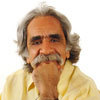 |
V. Ara Apkarian Understanding of photophysics and chemical dynamics in condensed media is the major thrust of our research. These studies invariably involve laser-based spectroscopic techniques that are implemented in both frequency and time domain, over the spectral range from far infrared to the deep ultraviolet. |
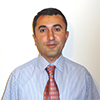 |
Ozdal Boyraz Dr. Boyraz works on integrated optics, optical communications systems, radiation detection and microwave photonics. In particular, his recent research activities focus on silicon and silicon nitride nano photonic devices, nonlinear optics in silicon, planar chip scale bio sensing technology, microwave photonics and silicon/silicon nitride based optical antennas and beam formation |
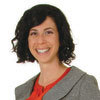 |
Suzanne A. Blum Research in the Blum Group focuses on the development of new catalysts and metal-mediated reactions with applications in organic synthesis. We are also developing single-molecule techniques to image catalytic reactions at individual transition metal centers. These single-molecule techniques are part of a big-picture, ground-breaking project to change the way chemists think about studying chemical reaction mechanisms: by actually watching reactions live, one molecule at a time |
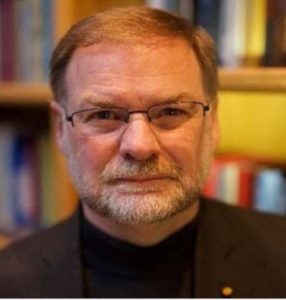 |
Chris Barty Professor Barty’s present research aims to enable new, laser-based, x-ray modalities for the precision detection and treatment of disease, novel x-ray studies of ultrafast material dynamics and the emergence of nuclear photonics as a new scientific discipline. |
 |
Robert Corn Characterization of molecular monolayers at metal surfaces by polarization- modulation FTIR reflection absorption spectroscopy (PM-FTIR-RAS) and optical second harmonic generation (SHG) measurements of orientation, organization, and electron transfer processes at liquid/liquid electrochemical interfaces |
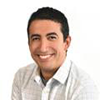 |
Franklin Dollar The Dollar Research Lab specializes in the interaction of light at extremely high intensities with the fourth state of matter, plasma. These highly nonlinear interactions result in the generation of unique sources of radiation in a compact space. X-rays, ions, electrons, and neutron beams are created from sources smaller than millimeter-scale. There is a potential for these sources to have wide-reaching applications including medical physics, fusion energy, and to probe the fastest and smallest events in the known universe. |
 |
Nien-Hui Ge We are exploiting new experimental techniques in ultrafast nonlinear spectroscopy, microscopy, and nanoscopy. The current focus includes multidimensional multicolor IR spectroscopy that are vibrational analogues of multidimensional NMR; sum-frequency generation/second harmonic generation spectroscopy and microscopy that are sensitive to noncentrosymmetric material systems, such as collagen tissues and electrified interfaces; and scattering scanning near-field optical microscopy that can be used to probe material response with femtosecond and nanometer resolutions, such as carrier dynamics in nanomaterials for solar energy conversion and storage. |
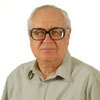 |
R. Benny Gerber Vibrational spectroscopy is among the main tools of physical chemistry in the exploration of molecular properties. Interpretation of the experiments requires theoretical calculations of the spectra, and for large, non-rigid molecules this is a formidable challenge. An algorithm developed in our group in recent years, the Vibrational Self-Consistent Field (VSCF) method(1), led to major progress on this problem, and has emerged as a leading tool in this field. |
 |
Alon Gorodetsky Our group looks to coleoid cephalopods (squids, octopuses, cuttlefish) as muses for the development of bioinspired technologies. In one research thrust, we are leveraging the unique cephalopod skin cell protein reflectin for programming the optical properties of mammalian cells and for electrically controlling the fate of mammalian cells, with our efforts holding relevance for regenerative medicine and engineered living materials. In another research thrust, we are drawing inspiration from cephalopod skin cells for the design and manufacturing of adaptive infrared and thermoregulatory materials, with a focus on applications in next-generation thermal camouflage and sustainable food packaging. Please browse the videos and publications to learn more about the current projects. |
 |
Howard (Ho Wai) Lee We are working projects on studying the interesting physics of the light properties in plasmonic and metasurface nanostructures and 2D materials for instance, field-effect tunable phase and amplitude modulation, spin-orbit interaction of light, optical nonlinearity and harmonic generation, and non-reciprocal magneto-optical Faraday rotation. |
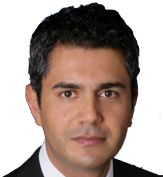 |
Ali Mohraz The aim of research in my group is to understand and exploit colloidal interactions, chemistry, assembly, and response to external fields to design microstructured materials with enhanced functionality for composites, biomimetic applications, alternative energy, and environmental remediation. Current projects involve both fundamental and applied elements of colloid synthesis and surface modification, microfluidics, guided- and self-assembly, and characterization of structure and dynamics by quantitative confocal microscopy and light scattering. |
 |
Shaul Mukamel My interests focus on the modeling of ultrafast dynamics and relaxation processes of large molecules, biological complexes and semiconductors and how they can be probed by novel optical spectroscopic techniques. My group works on developing coherent optical and infrared pulse sequences which accomplish goals analogous to multidimensional NMR and have the capacity to probe protein structures and dynamics with high temporal, spectral, and spatial resolution. |
 |
SungWoo Nam Many mechanical deformations, such as buckling, crumpling, wrinkling, collapsing, and delamination, are usually considered as threats to mechanical integrity and are avoided or reduced in the traditional design of materials and structures. Our research goes against these conventions by tailoring such mechanical instabilities to create new functional morphologies. We use ultralow bending stiffness and semiconducting properties of atomically-thin materials to enable emerging mechanically-coupled properties (e.g., quantum emission, exciton localization/condensation, tunable plasmonics, flexoelectricity, etc.) and device-level multi-functionalities that extend beyond those of bulk material systems. |
 |
Sergey Nizkorodov We are interested in the mechanisms of photochemical interactions between the solar radiation and atmospheric aerosol particles. Can aerosol particles serve as efficient catalysts of photochemical processes? What sort of chemistry happens inside these particles as they drift through the atmosphere exposed to solar radiation? Can photochemical reactions on particle surfaces make the particles more toxic? In our laboratory, we try to find answers to these intriguing problems using modern analytical techniques based on laser spectroscopy, chromatography, and mass- spectrometry. |
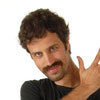 |
Eric Potma We use advanced nonlinear optical techniques to study materials at the microscopic and nanoscopic scale, with applications in biological imaging, single molecule sensing and silicon photonics. Students in our lab are trained in optics, molecular spectroscopy, cellular biology and/or condensed matter physics. We use both experimental and computational approaches. |
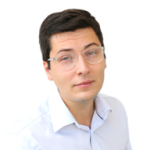 |
Maxim Shcherbakov We focus on nanophotonic materials and devices for applications in quantum and optical computing. Current projects include atomically flat, optically switchable magnetic memories; photonic integrated circuits for trapped ion quantum computers; phonon-polaritonic mid-infrared materials; optical neural networks based on femtosecond nonlinearities; and strong-field light-matter interactions in metamaterials. |
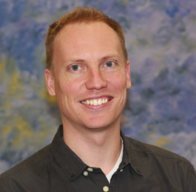 |
Matthew Sheldon The Sheldon laboratory studies fundamental questions about optical energy conversion relating to plasmonic and inorganic nanoscale materials. Experiments are principally designed to identify and optimize unique nanoscale phenomena that are useful for solar energy, as well as related opportunities at the intersection of nanophotonics and chemistry, for broad application beyond the scope of solar energy. Current research activities explore how nanofabricated materials can provide systematic control over the thermodynamic parameters governing optical power conversion. By controllably shaping, confining, and interconverting the energy and entropy of a radiation field, several different classes of light-powered heat engines become possible. |
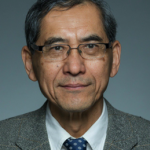 |
Toshiki Tajima Our Group is engaged in the laser wakefield accelerators (LWFA). This may be miniature-sized so that it can be applied to radiotherapy of cancer and cardiology. In addition, our Group is engaged in aneutronic (neutronless) fusion reactions and their applications to fusion reactors. |
